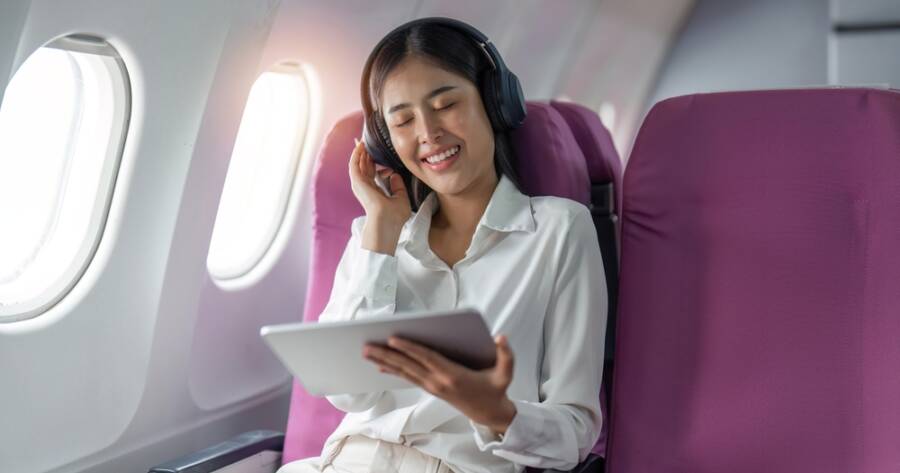Long flights can take a toll on even the most seasoned traveler, especially when legroom is tight and sleep seems impossible. With a little preparation and a few simple tricks, flying in economy doesn’t have to mean discomfort. Small adjustments (like choosing the right seat or staying properly hydrated) can dramatically improve how you feel during and after your journey. Comfort is possible, even at 30,000 feet, if you plan wisely.
Choose Your Seat Strategically
Not all economy seats are created equal. If you’re booking in advance, aim for an aisle seat for more freedom to stretch or a window seat if sleep is your priority. Exit row and bulkhead seats often offer more legroom, though they can come with trade-offs like limited recline or proximity to bathrooms.
Check seat maps on sites like SeatGuru to avoid seats near galleys or lavatories, which can be noisy or bright. Some airlines also allow you to bid for upgrades to premium economy at a lower cost than booking it outright. Even within standard economy, a smart seat choice can make hours in the air far more bearable.
Keep Moving and Stretch Regularly
Sitting still for hours can lead to stiffness and poor circulation. Simple stretches—like rolling your ankles, pointing and flexing your toes, or reaching up with your arms—can boost blood flow and help you stay limber. If the seatbelt sign is off, take short walks up and down the aisle every hour or so.
Compression socks are also a great addition for long-haul flights. They support circulation and can help reduce the risk of swelling or more serious issues like deep vein thrombosis. Even subtle movements while seated make a difference, especially when the cabin feels cramped and restless.
Bring Smart Sleep Essentials
Sleep can be elusive on a plane, especially when you’re surrounded by noise and light. Pack a travel pillow that supports your neck, an eye mask to block out light, and noise-canceling headphones or earplugs to create a restful atmosphere. A light blanket or large scarf can help keep you warm when the cabin temperature dips.
If you struggle to sleep sitting upright, recline your seat slightly and position your pillow for maximum support. Avoid heavy meals and caffeine close to departure to give your body the best chance of winding down. Melatonin or natural sleep aids may help, but always test them before you fly.
Prioritize Hydration and Light Meals
The dry cabin air on planes can leave you feeling parched and sluggish. Drink plenty of water throughout the flight—even if it means more bathroom trips. Avoid alcohol and limit caffeine, both of which can dehydrate you and disrupt your sleep. Bringing a reusable water bottle you can fill after security is a smart way to keep sipping.
Stick to light, healthy snacks and meals. Salty and greasy foods can make you feel bloated or uncomfortable midair. A few well-timed snacks like nuts, fruit, or granola bars can keep your energy up without overloading your stomach.
Dress for Comfort, Not Style
What you wear on a flight matters more than you might think. Choose loose, breathable layers that allow you to adjust to fluctuating cabin temperatures. Comfortable shoes that slip on and off easily are a must, especially during security checks and when your feet swell during the flight.
Avoid tight waistbands or heavy fabrics that can restrict movement or make you feel overheated. Soft socks and a cozy hoodie or cardigan can make all the difference when you’re trying to relax. The more comfortable you are in your clothing, the easier it is to settle in and focus on rest or entertainment.
Small Changes Make a Big Impact
Flying economy doesn’t have to mean sacrificing comfort. A few thoughtful choices (from where you sit to what you wear) can turn a long flight into a manageable experience. Listening to your body, staying hydrated, and giving yourself tools to sleep or relax can make a world of difference. With a little preparation, you’ll arrive at your destination feeling fresher, calmer, and ready to enjoy what comes next.

